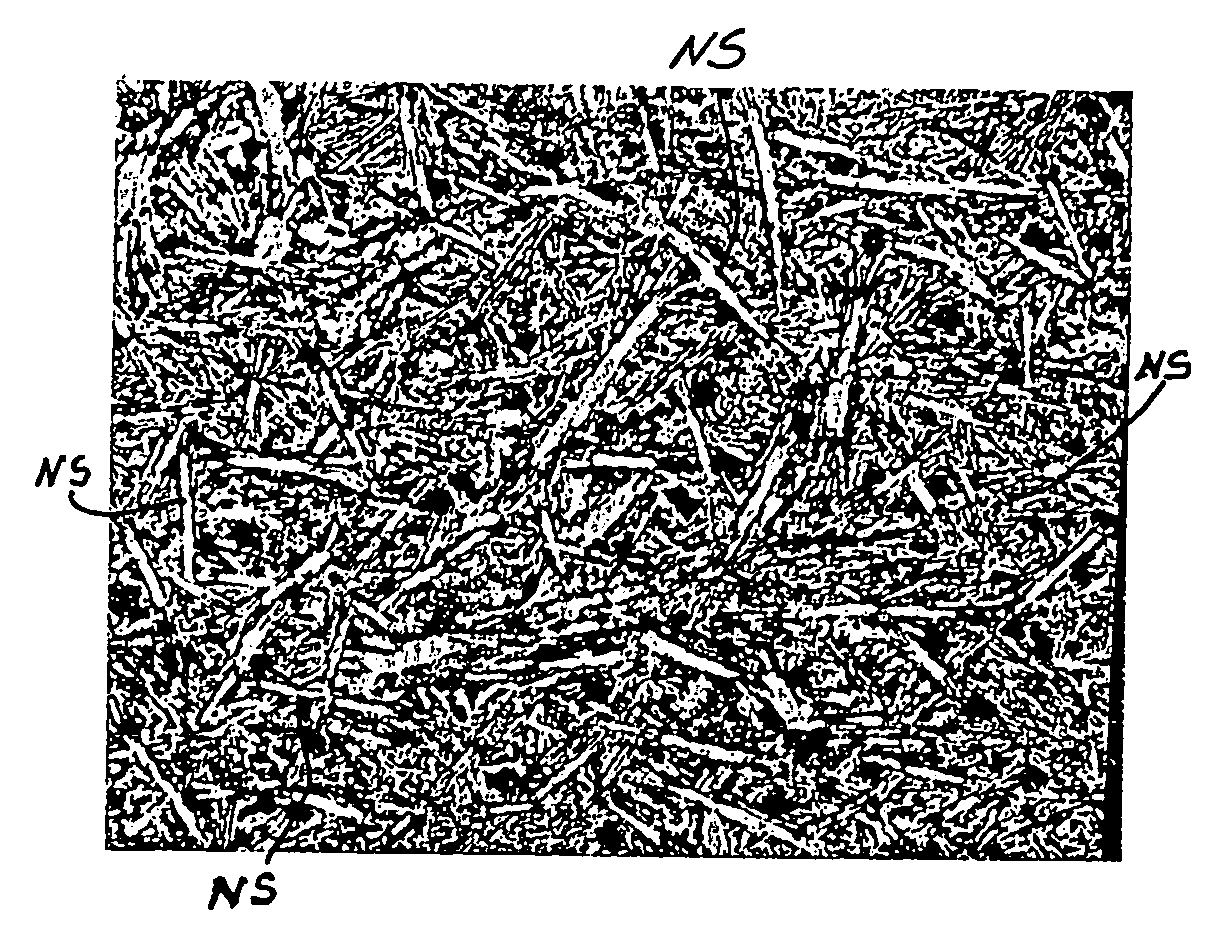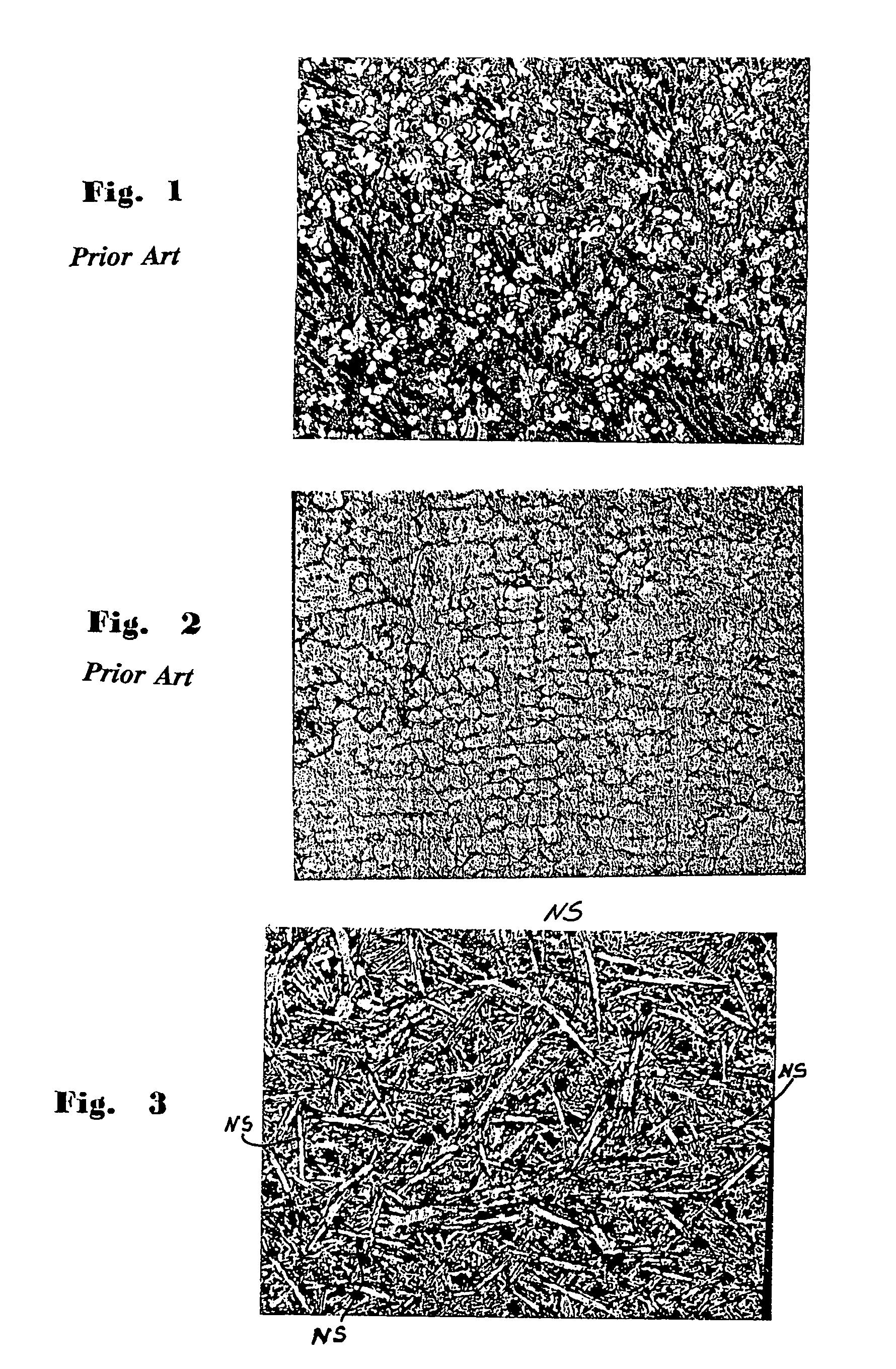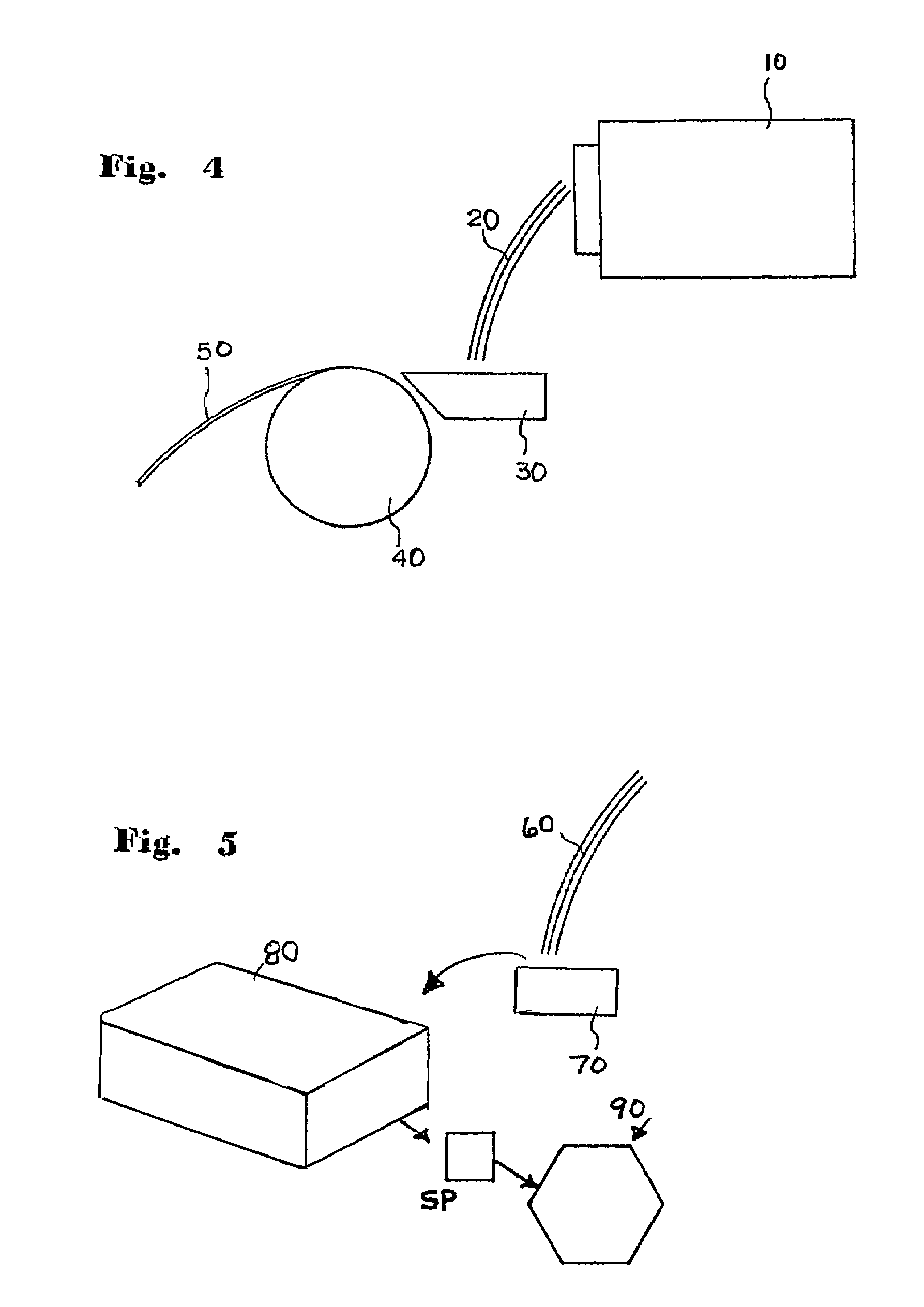Items made of wear resistant materials
a technology of wear resistance and material, applied in the field of wear resistance materials, can solve the problems of high cost of inserts, incompatible with most application geometries, and wear of parts, and achieve the effect of reducing a tendency to crack and/or fracture, and improving strength
- Summary
- Abstract
- Description
- Claims
- Application Information
AI Technical Summary
Benefits of technology
Problems solved by technology
Method used
Image
Examples
Embodiment Construction
[0035]FIG. 1 is a photomicrograph at 200× magnification of a metallurgically polished prior art hardfacing deposit of commercially available ARMACOR (™) material.
[0036]FIG. 2 is a photomicrograph at 200× magnification of a polished prior art hardfacing deposit of commercially available ARNCO 200 XT (™) material. The deposit as shown in FIG. 2 has grains of non-uniform size and distinct carbide pieces are present that contribute to cracking. The prior art materials of FIG. 1 and FIG. 2 have a generally randomly sized grain structure, which is relatively uncontrolled. The different sizes of the particles in the material of FIG. 1 and FIG. 2 contribute to metallurgical notches (stress risers) that can promote cracking.
[0037]FIG. 3 is a photomicrograph at a 200× magnification of a welded cross-section of hardfacing material according to the present invention whose composition is as follows (each % by weight):
[0038]
Chromium29.10-30.00%Nickel5.00-6.00%Titanium1.00-2.10%Boron3.00-3.90%Sili...
PUM
| Property | Measurement | Unit |
|---|---|---|
| thickness | aaaaa | aaaaa |
| thickness | aaaaa | aaaaa |
| wear resistant | aaaaa | aaaaa |
Abstract
Description
Claims
Application Information
 Login to View More
Login to View More - R&D
- Intellectual Property
- Life Sciences
- Materials
- Tech Scout
- Unparalleled Data Quality
- Higher Quality Content
- 60% Fewer Hallucinations
Browse by: Latest US Patents, China's latest patents, Technical Efficacy Thesaurus, Application Domain, Technology Topic, Popular Technical Reports.
© 2025 PatSnap. All rights reserved.Legal|Privacy policy|Modern Slavery Act Transparency Statement|Sitemap|About US| Contact US: help@patsnap.com



